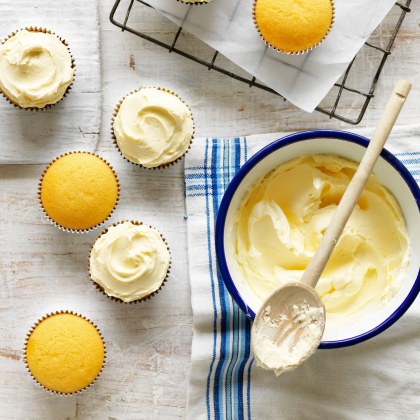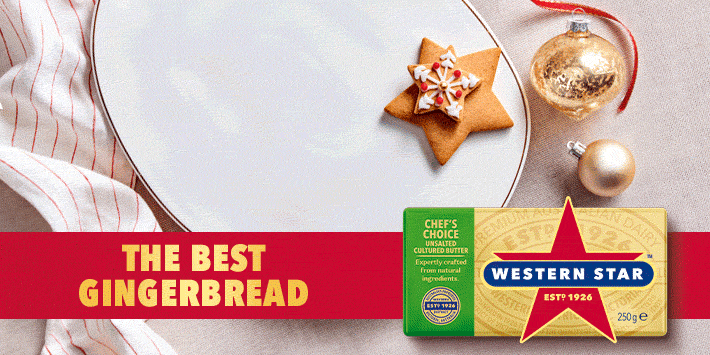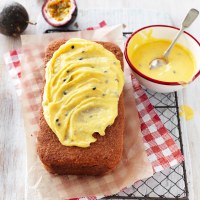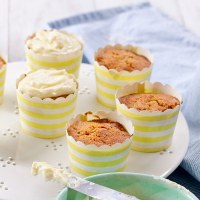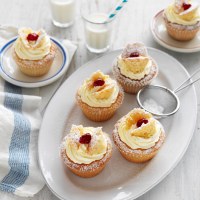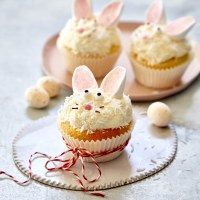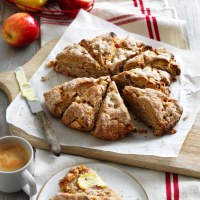How to make buttercream
One of the most popular choices for icing cakes and cupcakes, buttercream is a simple ratio of three ingredients; butter, icing sugar and flavouring. It’s easy to personalise, simply by adding various flavours and colours, and works beautifully on cakes, cupcakes and most desserts.
Since butter is the main ingredient that provides the base flavour, choose a good quality unsalted butter, like Western Star Chef's Choice Butter. It's cultured and has an especially creamy flavour and texture that will ensure a velvety and delicious finish. It's a staple recipe for any baker.
Once you know this recipe and tips for making it, you'll be whipping up buttercream delights with ease.
Buttercream Recipe
INGREDIENTS
- 250g Western Star Chef’s Choice Butter, diced at room temperature
- 250g icing sugar mixture, sifted
- 2 teaspoons vanilla extract
- 1-2 tablespoons milk, room temperature
METHOD
- Place the butter into the bowl of a stand mixer and mix on medium-high speed for 5 minutes. Butter will lighten in colour.
- Stop the mixer and add all the sugar and vanilla. Beat on low speed until combined.
- Increase speed to high and beat for 5-8 minutes or until fluffy.
- Add milk a teaspoon at a time until it reaches your desired consistency.
Save the recipe to your myfoodbook cookbooks: Basic Buttercream Icing
Why are room temperature ingredients important?
Cold butter is too hard to work with, but warm or even slightly melted butter will produce a greasy texture instead of a light, whipped result. So plan ahead, weigh and cut while it is still cold then set aside at room temperature to soften, but not warm up. Lost track of time and your butter is looking a little too soft? Pop it in the refrigerator for a few minutes to firm up before whipping it.
Sugar or icing sugar?
Buttercream needs either icing sugar or icing sugar mixture. However, do not use sugar or caster sugar, it’s too grainy for buttercream. Always sift the sugar to remove lumps and incorporate more air into the buttercream. If you're using a cup measure to measure out the icing sugar, do it before sifting to ensure you have the right ratios.
Why do you have to beat the icing for so long?
By beating at a higher speed, you’re incorporating more air into the frosting. This results in a lighter texture and makes the final product taste less sweet. The butter will lighten in colour and become very fluffy when it's ready. Overbeating the buttercream won't affect the flavour or texture, but it may develop air bubbles which you might want to avoid when piping.
How do you manage the consistency of your buttercream?
By adding liquid. If you’re not colouring your buttercream, use milk or cream. Both are easily absorbed and will provide the moisture required to manage the consistency of your buttercream so it’s easy to spread.
How do you stop buttercream from melting?
If it’s very warm and humid, your buttercream may melt. You can add extra icing sugar to make it stiffer. Use a little at a time until it reaches your desired consistency, but although it will be more resistant to melting it will be much sweeter.
How do you flavour buttercream?
Extracts and concentrates, jams or conserves, or other non-liquid ingredients such as cocoa powder are great for flavouring your buttercream without adding excess liquid. Adding juices or purees to create interesting flavours and colours can make the buttercream too loose. Add them before adding milk, then only add enough milk to get the right consistency. Or, beat in more icing sugar, but be careful that it doesn't make it too sweet.
What is the best way to colour buttercream?
Gel colouring is the best way to add vibrant hues with minimal excess liquid. Normal food colouring can add too much liquid to the mixture, so add it before beating in the milk.
How do you store buttercream?
Keep it in the fridge for up to two weeks in an airtight container. Before using, beat to a smooth consistency, adding extra milk as needed.
How do you freeze buttercream?
It can keep for up to three months if stored in an airtight container or freezer bag. To thaw, leave it in the refrigerator overnight. The next day, bring it to room temperature and re-whip until it's a spreadable texture.



